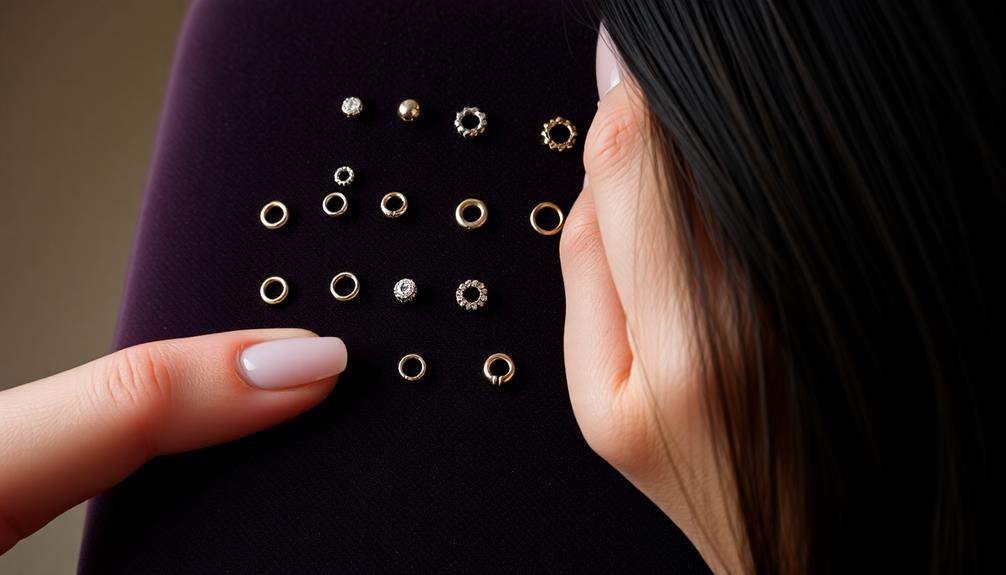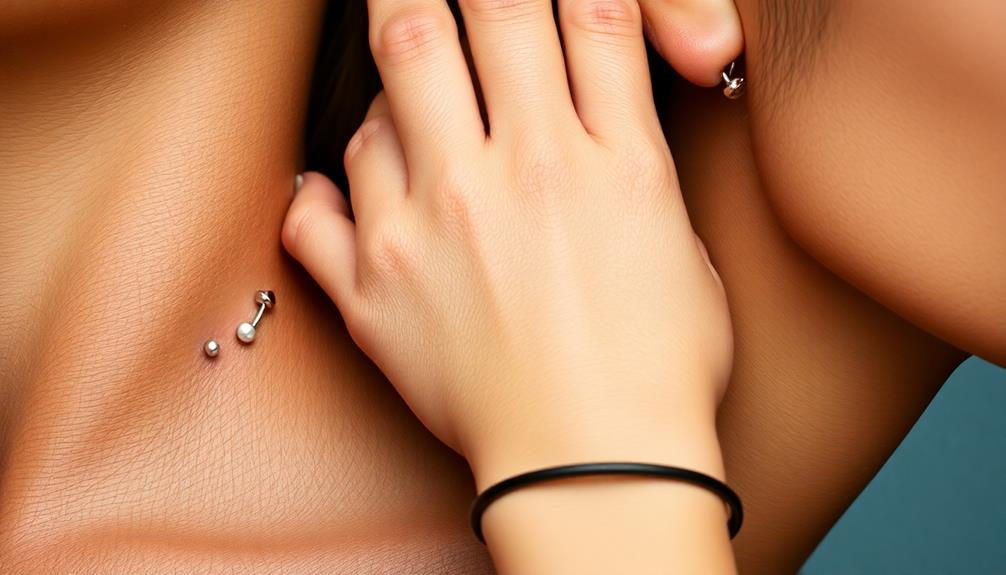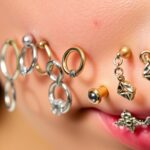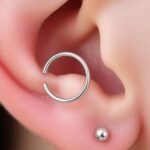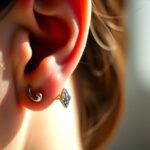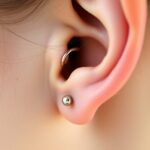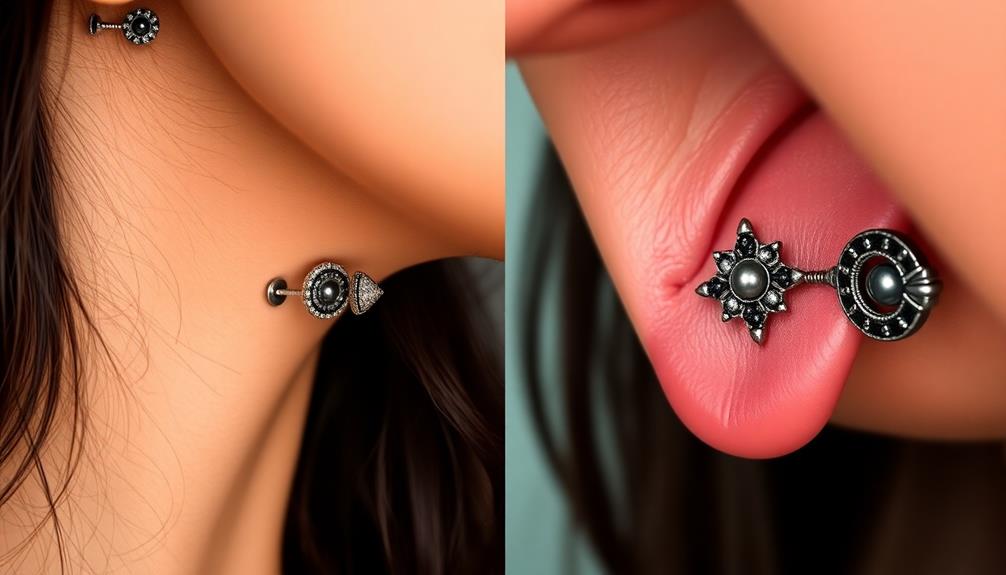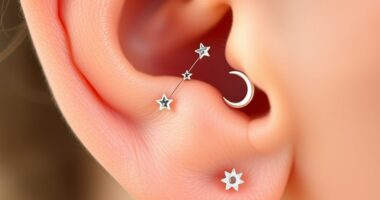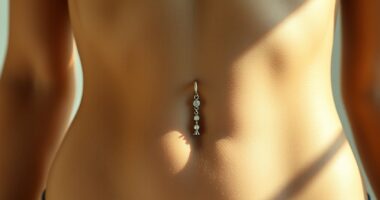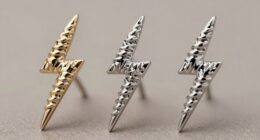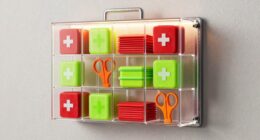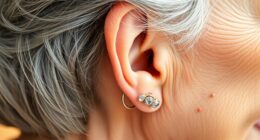Septum piercings are a bold choice that lets you express your style. For initial piercings, a 16g size promotes faster healing, and typical inner diameters range from 8mm to 10mm. Popular jewelry styles include circular barbells, captive bead rings, and clicker rings, each offering unique aesthetics. To conceal your piercing, you can flip it up into your nostrils or use smaller jewelry for discreetness. Regular practice helps with this, and snug-fitting pieces stay in place better. Don't forget, proper aftercare is essential to prevent infections. Keep exploring, and you'll uncover even more tips for your septum journey!
Key Takeaways
- Choose a 16g (1.2mm) gauge for initial septum piercings to promote faster healing and comfort.
- Explore various jewelry styles such as circular barbells, captive bead rings, and seamless rings for personalization.
- Smaller jewelry pieces can be easily concealed by pushing them into the nostrils, while larger rings may require adjustment.
- Regularly clean the piercing with saline solution and avoid touching it to minimize infection risks during the healing process.
- Consult with a professional piercer for guidance on ideal sizes and styles, ensuring a balance of aesthetics and comfort.
Septum Piercing Basics

Septum piercings are a unique way to express your style, involving a small hole made through the septum—the thin tissue between your nostrils. For your initial piercing, it's important to find a professional piercer who understands the anatomy of your nose and can create the hole in the softer area for comfort.
The typical initial gauge size for septum piercings is 16g (1.2mm), which allows for easier healing. The healing process usually takes about 6 to 8 weeks, but full recovery can take around 4 to 6 months. During this time, regular aftercare is essential to minimize the risk of infection and promote healing.
You should clean the area properly and avoid touching it with dirty hands. Choosing quality jewelry made from materials like 316L surgical stainless steel is critical, especially for new piercings, as it's hypoallergenic and reduces the chance of allergic reactions.
Once healed, you can explore different septum rings and even consider thicker jewelry options. Remember, the right jewelry size and appropriate gauge play a significant role in your comfort and the longevity of your piercing.
Choosing the Right Size
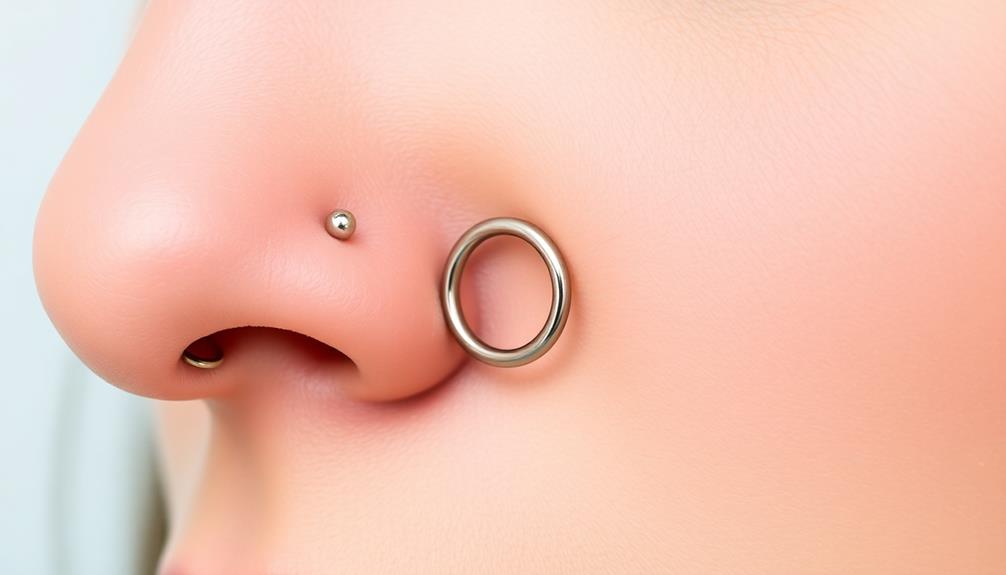
Finding the right size for your septum piercing is essential for both comfort and style. The recommended gauge size for initial piercings is typically 16g (1.2mm), promoting faster healing and reducing discomfort.
When selecting your jewelry, diameter is just as important; individual nasal anatomy can greatly influence fit. Common inner diameters range from 8mm to 10mm, which tend to provide the best comfort.
It's a good idea to consult with your piercer to determine the ideal gauge and diameter based on your unique anatomy and preferences. After the initial healing time of 6-8 weeks, you can experiment with thicker gauges to achieve different aesthetics and comfort levels.
Remember, finding the perfect size might take some trial and error.
Balancing personal style with comfort is crucial to prevent irritation or discomfort in your septum. As you explore various jewelry pieces, pay attention to how each one feels throughout the day.
Ultimately, prioritizing your comfort while expressing your personal style will lead to a satisfying septum piercing experience.
Popular Jewelry Styles
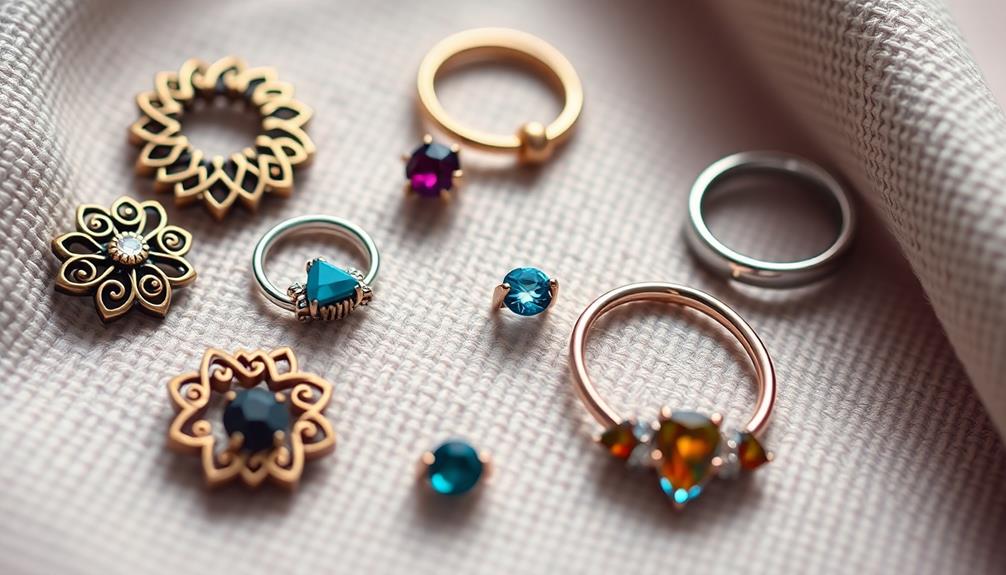
Once you've nailed down the right size for your septum piercing, the next step is selecting the perfect jewelry style. You've got various types of septum jewelry to choose from, and each offers its own flair.
A Circular Barbell is a versatile option, shaped like a horseshoe and available in high-quality materials like stainless steel, titanium, and gold. If you love customization, a Captive Bead Ring (CBR) lets you switch out beads for gemstones or charms, perfect for personal expression.
For a minimalist look, consider the Seamless Ring, which has a smooth, continuous appearance that many prefer. If convenience is key, the Clicker Ring features a hinged mechanism, making it easy to wear daily while still showcasing intricate designs.
Another fun choice is the Dangle Septum Ring, which adds decorative elements that hang down, injecting personality into your piercing without compromising its integrity.
No matter what you choose, remember that getting a septum piercing is an exciting journey, and finding the perfect septum ring is essential. Use this complete guide to explore your options!
Concealment Techniques

Discretion is key when it comes to managing your septum piercing in various settings, especially workplaces with strict policies. To effectively apply concealment techniques, consider the size of your septum jewelry. Smaller pieces are easier to push up into your nostrils, allowing them to rest discreetly inside your nose.
If you have larger rings, flipping them up can be challenging, requiring specific facial expressions and adjustments to guarantee they stay hidden.
Practice is essential; regularly flipping and adjusting your jewelry can improve your concealment skills, making certain that snug-fitting jewelry stays securely in place. If your jewelry has decorative ends, unscrewing them can make it easier to flip your piercing up when necessary.
Always consult with a professional piercer to find the right size and type of jewelry that suits your healing needs while allowing for effective concealment.
Familiarizing yourself with workplace policies regarding visible piercings is essential for guaranteeing you manage your septum piercing discreetly. By staying informed and practicing these techniques, you can confidently navigate different environments without drawing attention to your piercing.
Aftercare and Maintenance

Proper aftercare and maintenance are essential for ensuring your septum piercing heals well and remains infection-free. Clean your piercing twice daily with a saline solution or saltwater to promote healing and prevent infection. Avoid touching or twisting it with dirty hands, as this can introduce bacteria.
Regularly monitor your piercing for signs of infection, such as redness, swelling, or unusual discharge. If you notice any of these symptoms, consult a professional immediately. Follow the aftercare instructions provided by your piercer, including avoiding swimming in pools and staying away from harsh chemicals.
Using hypoallergenic materials for your septum jewelry, such as titanium or surgical stainless steel, can greatly reduce the likelihood of allergic reactions during the healing process. Here's a quick reference for your aftercare routine:
| Step | Action | Frequency |
|---|---|---|
| Clean | Use saline solution or saltwater | Twice daily |
| Touch | Avoid touching with dirty hands | As needed |
| Monitor | Check for infection signs | Daily |
| Consult | Seek help for any concerns | As needed |
| Jewelry Material | Use hypoallergenic materials | Always |
Frequently Asked Questions
How to Hide Your Septum Piercing?
To hide your septum piercing, opt for smaller jewelry you can push up into your nostrils. Practice flipping larger pieces discreetly, and make certain you're familiar with workplace policies to maintain compliance while showcasing your style.
How to Know What Size Septum Ring to Get?
When choosing your septum ring size, think of it like finding the perfect pair of jeans. Consult a professional piercer to measure your anatomy, ensuring comfort and style blend seamlessly for your unique look.
What Is the Best Way to Size up a Septum?
To size up a septum, start by ensuring your piercing's fully healed. Gradually increase the gauge, ideally consulting a professional. Try different sizes to find what feels most comfortable and suits your personal style.
What Is the Easiest Septum Ring to Put In?
If you're looking for the easiest septum ring to put in, consider a captive bead ring. Its circular shape and removable bead make insertion straightforward, perfect for beginners wanting a hassle-free experience.
Conclusion
To sum up, septum piercings can be a fantastic way to express your unique style without overwhelming your look. If you're worried about how it might affect your job or daily life, remember there are plenty of discreet jewelry options and concealment techniques to keep it hidden when needed. With the right aftercare, your piercing can be a beautiful addition to your persona. So go ahead, embrace your individuality—you won't regret it!

